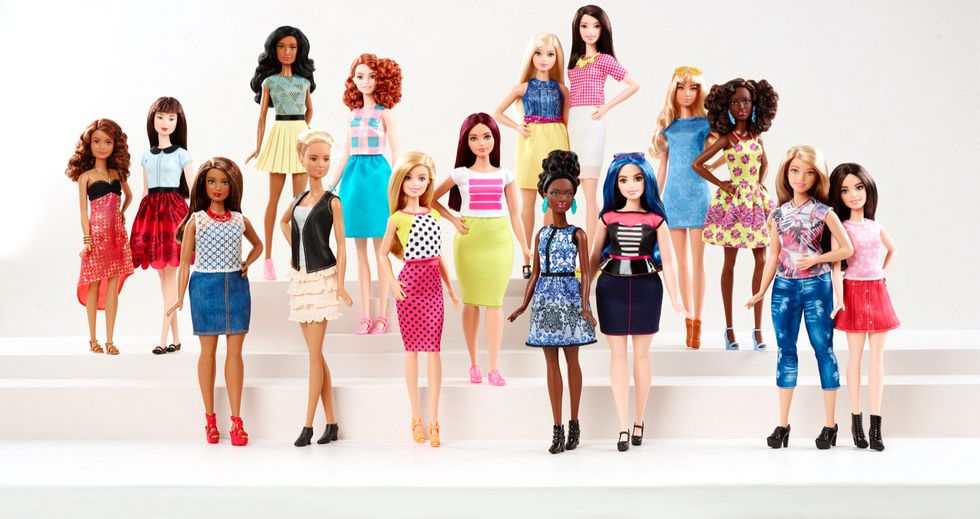This past week, Barbie debuted a whole new look. After receiving decades' worth of criticism on Barbie's weight and skin tone, Mattel Inc. released the 2016 Fashionistas®. This is the biggest change Barbie has seen in her 57-year history. The new Barbies come in four body types, seven skin tones, 22 eye colors and 24 hairstyles. The unifying factor is that they all still sport the same iconic fashionable clothing and accessories.
Not everyone, however, is impressed by Barbie's new line. Many have taken to social media to complain and critique the new age of Barbies. A friend of mine voiced her own misgivings about Fashionista Barbie:
"Women should not have to look at a Barbie doll and say, 'Oh hey, this is how I think I'm going to look or how I want to look when I'm older.' I don't look at a Barbie doll, I look at all of the women who are supposed to be figures in my life. And I think for a lot of girls that may be models and celebrities.
When the new Barbie commercial came out I watched it and saw that they picked a black girl, a fat girl, a Hispanic girl and the politically correct white girl with blonde hair and blue eyes. You're trying too hard to create diversity there. You know what, I am African-American and I still played with the blonde Barbie. But I also had Dr. Mae Jemison, who was the first African-American astronaut going into space.
I think you can play with whoever and you don't have to try so hard to be politically correct about it. It's great that they tried to appease what other people were thinking, but it's kind of bigger than Barbie. Yeah, you can change the Barbie dolls, but what about the real women who are trying to emulate Barbie? The models tell you that fat is not OK; Barbie can't talk."
Barbie was originally created to be a representation of every girl. Creator Ruth Handler said, “My whole philosophy of Barbie was that through the doll, the little girl could be anything she wanted to be. Barbie always represented the fact that a woman has choices.” By offering all these new looks, Barbie is tackling a problem that is bigger than Barbie; she's highlighting a major cultural issue. The media portrays beauty in one light. Girls are taught to conform to strict regimens that will keep them thin. It's OK to be "curvy," but it's not OK to be plus-sized. Dark-skinned women are constantly white-washed on the covers of magazines.
But maybe the times are changing. Aerie is no longer retouching their models with Photoshop. #BlackGirlMagic is trending to remind women everywhere that black is beautiful. Gina Rodriguez has become an empowering voice for Latinas. So what does this mean for the new Barbie? Recently, "Glamour" asked little girls what they think about traditional Barbie and then showed them the new line. The video below shows their responses.
To some, Barbie might just be a doll. But to many young girls, she's a friend, an inspiration, and a role model. Maybe there is forced diversity in the campaign and it's all just a ploy for Mattel to increase sales. Maybe it's time to stop being politically correct. You decide. But know that no matter what, the 2016 Fashionistas® are revolutionary. Who would have imagined that a plastic figurine could spark a conversation on feminism and body diversity?
The new promotional video says it all: "It's important for Barbies to look different, you know, like the real people in the world... We have to let girls know, it doesn't matter what shape you come in, that anything is possible... Imagination comes in all shapes and sizes."






















